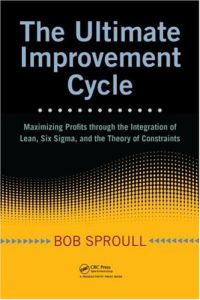Join getAbstract to access the summary!

Join getAbstract to access the summary!
Bob Sproull
The Ultimate Improvement Cycle
Maximizing Profits through the Integration of Lean, Six Sigma, and the Theory of Constraints
CRC Press, 2009
What's inside?
Combining the best of Lean, Six Sigma and TOC is the ultimate approach to process improvement
Recommendation
Many business professionals have practiced Lean, Six Sigma and the Theory of Constraints. Many others have a working knowledge of the benefits, claims and limitations of these three widely acclaimed methods of improving business processes. Bob Sproull combines the strengths of these three methods into a blended set of process upgrades he calls the “Ultimate Improvement Cycle.” If you are familiar with manufacturing operations and these various schools of thought on process improvement, the book’s language, charts and graphs will be accessible and useful. It may rely too much on insider jargon and data for those who are new to the field, although many of the concepts apply to nonmanufacturing firms as well. getAbstract recommends this book to professionals with an operational orientation because they will best appreciate Sproull’s refreshing approach to combining the three most common process-improvement methods.
Summary
About the Author
Bob Sproull, an experienced manufacturing executive, consults with manufacturers on improving their operations and advises private equity firms about investments in manufacturing turnarounds.


















Comment on this summary